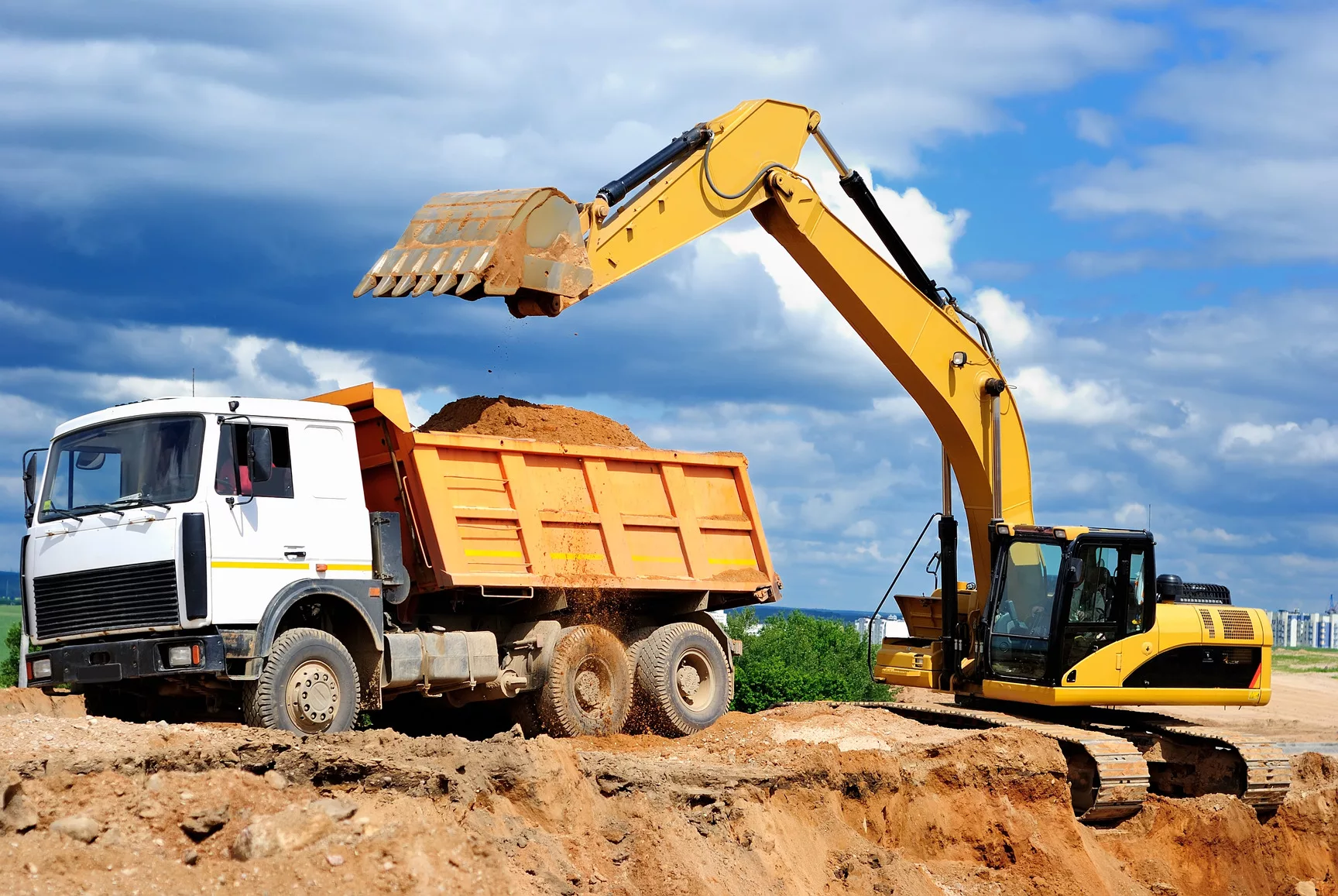
Decoding Job Sites: Understanding Different Types of Heavy Equipment
Decoding Job Sites: Understanding Heavy Equipment Types
The strategic deployment of heavy equipment is paramount across construction, mining, agriculture, and logistics. Modern projects inherently demand specialized machinery tailored for precise tasks. A deep understanding of these powerful machines' distinct categories and capabilities is fundamental for achieving operational efficiency and ensuring project success. This core knowledge minimizes potential setbacks and optimizes overall productivity on diverse job sites.
The spectrum of heavy equipment available today is vast, ranging from earthmoving giants to precision lifting devices. Each piece is engineered with unique attributes tailored to excel in particular environments and perform specialized functions. Distinguishing between a bulldozer and a grader, or a tower crane and a mobile crane, is crucial for anyone involved in project planning, execution, or equipment procurement. This differentiation prevents misapplication, which can lead to delays and increased operational costs.
Misidentification or improper utilization of heavy equipment can have significant repercussions. Beyond financial implications, it poses considerable risks to personnel and project timelines. An excavator, while excellent for digging, is not designed for compacting soil, a task best left to a roller. Selecting the right tool for the job directly correlates with enhanced safety protocols, improved project completion rates, and reduced operational expenditures. This precision underpins the robust framework of any successful large-scale undertaking.
For organizations like Exzacttul, which facilitate access to essential machinery, a deep understanding of equipment types is paramount. Our ability to guide clients towards optimal selections hinges on this expertise. Whether a client requires machinery for large-scale excavation, material handling, or precision grading, providing accurate recommendations ensures their operations proceed smoothly. This consultative approach helps clients make informed decisions, aligning equipment capabilities with specific project demands.
This article aims to demystify the complex landscape of heavy equipment by categorizing and explaining the primary types commonly found on job sites. We will explore their core functions, typical applications, and key distinguishing features. By shedding light on these critical aspects, we seek to empower professionals with the knowledge necessary to navigate equipment choices confidently, thereby enhancing operational outcomes and fostering a more productive work environment across all heavy industry sectors.
Making informed decisions about heavy equipment extends beyond immediate project needs; it influences long-term operational sustainability and strategic growth. Organizations that consistently match the right equipment to the right task build a reputation for reliability and efficiency. This strategic alignment minimizes wear and tear, prolongs equipment lifespan, and optimizes resource allocation over time, ultimately strengthening an organization's capacity to undertake future projects with greater assurance and competence.
Key Applications and Considerations
-
Earthmoving: For excavation, grading, and moving soil. Pros: High power, efficient for bulk material. Limitations: Costly operation, needs skilled personnel, complex transport.
-
Lifting & Handling: Hoisting and positioning heavy items. Pros: Safe vertical movement, precise placement. Limitations: Strict safety rules, intricate setup, load capacity limits.
-
Compaction & Paving: Building stable foundations and smooth surfaces. Pros: Ensures durability, structural integrity. Limitations: Task-specific, weather-sensitive, less versatile for general use.
Expert Perspectives and Industry Dynamics
Experts in the heavy equipment sector largely agree on the evolving balance between highly specialized machinery and more versatile, multi-functional units. While specialization often yields superior performance for a singular task, such as a rock drill in quarrying, versatility offers operational flexibility, especially for smaller projects or those with fluctuating requirements. The consensus suggests that larger enterprises might favor specialized fleets for maximum efficiency, whereas mid-sized firms often seek equipment that can adapt to a broader array of tasks, balancing performance with adaptability.
A key argument gaining traction concerns the integration of advanced technologies, such as telematics and GPS, into heavy equipment. Proponents highlight how these systems provide real-time data on performance, location, and maintenance needs, significantly enhancing operational oversight. This data-driven approach allows for predictive maintenance, optimized fuel consumption, and improved safety compliance. Critics, however, sometimes raise concerns about data security and the initial capital outlay required for such sophisticated systems, emphasizing the need for robust IT infrastructure.
There's ongoing discussion regarding the optimal acquisition model: outright ownership versus equipment rental. Advocates for ownership point to potential long-term asset appreciation and immediate availability, particularly for frequently used, core equipment. Conversely, proponents of rental models emphasize reduced capital expenditure, access to the latest technology without depreciation concerns, and flexibility to scale fleets according to project demands. The optimal choice often depends on an organization's financial strategy, project pipeline consistency, and internal maintenance capabilities.
Sustainability is increasingly influencing equipment design and selection. Industry experts stress the growing importance of machinery that adheres to stringent emission standards and offers enhanced fuel efficiency. While there's broad agreement on the environmental benefits, some debate arises regarding the performance trade-offs and higher upfront costs associated with newer, greener technologies. The drive towards electric and hybrid heavy equipment, though nascent, represents a significant shift, prompting discussions on charging infrastructure and battery life.
Another crucial aspect frequently discussed is the critical role of skilled operators. Even the most advanced equipment requires proficient handling to maximize efficiency and ensure safety. There's a strong consensus that continuous training and certification programs are indispensable. Some experts argue that while automation reduces certain human errors, it elevates the need for operators with sophisticated technical understanding to manage complex systems, rather than merely operating levers. This underscores the human element's enduring importance in an increasingly mechanized field.
Concluding Observations
Understanding the diverse types of heavy equipment is paramount for success across industrial sectors. This foundational knowledge directly influences operational efficiency, project safety, and resource optimization. Informed decisions regarding machinery selection lead to superior outcomes and minimized operational challenges.
As technology advances and industry demands evolve, staying abreast of equipment innovations and best practices remains crucial. Organizations like Exzacttul are committed to providing the insights and solutions necessary to navigate this complex landscape, ensuring every project is equipped for maximum potential and sustained success.
Comments 4


Nozomi Maeda
1 days agoThank you for your valuable feedback! We're delighted to know the insights resonate with your professional experience. Our goal is always to provide practical knowledge that supports effective decision-making on site.
Reply
Ryoko Tachi
6 days agoThe section on ownership versus rental models was interesting, but I feel it could have delved deeper into the long-term maintenance burden for owned equipment. That's a huge factor for many businesses.
Reply
Yuuto Hoshino
1 days agoWe appreciate your perspective. You raise an excellent point regarding the long-term maintenance burden. We will consider expanding on this aspect in future content to provide an even more comprehensive analysis. Thank you for your engagement!
Reply
Kenzo Akimoto
6 days agoThis article provides a wonderfully clear and concise overview of heavy equipment types. The emphasis on practical applications and operational nuances is particularly helpful for project managers like myself. It reinforces the importance of informed machinery selection.
Reply